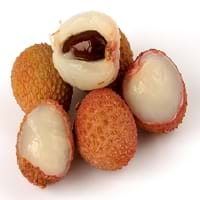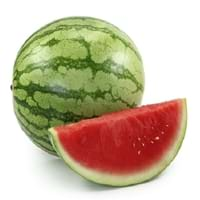Health Benefits
Cancer prevention, Cures gastro-intestinal troubles, Heart care, Muscle pain relief, Prevents blindness from diabetes
Anti-aging benefits, Anti-inflammatory properties, Asthma treatment, Body hydration, Cancer prevention, Digestive aid, Skin cleansing, Skin rejuvenation
General Benefits
Boosts immune system, Digestive aid, Fights against infections, Helps in weight loss, Maintains healthy cholesterol level, Strengthens bones
Anti-inflammatory properties, Body hydration, Controls blood pressure, Digestive aid, Maintains healthy cholesterol level
Skin Benefits
Anti-aging benefits, Skin rejuvenation
Anti-aging benefits, Brightens and lightens complexion, Hydrates skin
Hair Benefits
Promotes longer and healthier hair, Protects hair
Promotes longer and healthier hair, Regulates hair growth
Allergy Symptoms
Coughing, Diarrhea, Headaches, Hives, Itching, Labored Breathing, Nausea, Runny nose, Swelling of mouth, tongue or lips, Vomiting, Watery eyes
Breathing difficulty, Decrease in blood pressure, Dizziness, Eczema, Hives, Runny nose, Swelling of mouth, tongue or lips, Watery eyes
Side Effects
May cause abdominal pain, Diarrhoea, Mouth irritation, Throat irritation, Weight gain
Allergic reaction, Bloating, Diarrhoea, Indigestion, Intestinal gas, Nausea, Vomiting
Best Time to Eat
As a snack in the late afternoon, Don't consume at night and before bed, Eat the fresh ones, avoid mixing with any other foods, don't eat after meal., Morning time (before lunch), Strictly avoid empty stomach
As a snack in the late afternoon, Don't consume at night and before bed, Eat the fresh ones, avoid mixing with any other foods, don't eat after meal., Strictly avoid empty stomach
Vitamin B5 (Pantothenic Acid)
Vitamin C (Ascorbic Acid)
Vitamin K (Phyllochinone)
Phytosterol
Not Available
Calories in Fresh Fruit with Peel
Not Available
Not Available
Calories in Fresh Fruit without Peel
Calories in Frozen Form
Not Available
Calories in Canned Form
Not Available
Type
Tree fruit, Tropical
Berry, Melon
Season
Spring, Summer
Summer
Varieties
Emperor fruit, Mauritiu, Sweet Heart, Brewster, Haak Yip and Bengal
Sugar Baby, Sangria, Golden Midget, Starlight, Jubilee, Starbrite, Extazy, Stars 'n' Stripes, Mickylee, Yellow Baby, Yellow Doll, Little Baby Flower, Sweet Favorite and Cream of Saskatchewan
Color
Bright red, Pink red
Canary yellow, Coral red, Orange, Salmon yellow, Scarlet red, White
Inside Color
Greyish-white
Red
Taste
Crunchy, Juicy, Sweet
Sweet
Origin
China, Indonesia, Philippines, Vietnam
Southern Africa
Soil Type
Alluvial, Loam, Well-drained
Sandy, Well-drained
Climatic Conditions
Absence of strong wind, Cold, Dry, Without frosts
Dry, Hot
Facts about
- The seed of Lychee fruit is toxic & can adversely affect the digestive system.
- This fruit gives a smoky flavor when eaten dried.
- This fruit is a symbol of love and romance in China.
- Watermelon contain 91% of water.
- In Japan & Chine, watermelon is a popular gift to bring a host.
- Entire watermelon is edible, even the rinds & seeds.
- There are more than 1200 varieties grown in the world.
Other Countries
Australia, India, South Africa, Thailand, United States of America
Algeria, Brazil, Egypt, Iran, Kazakhstan, Mexico, Spain, Turkey, United States of America
Top Importer
Hong Kong
Germany
Botanical Name
Litchi chinensis
Citrullus Lanatus
Synonym
Nephelium litchi
Citrullus vulgaris
Subkingdom
Tracheobionta
Tracheobionta
Division
Magnoliophyta
Magnoliophyta
Class
Magnoliopsida
Magnoliopsida
Subclass
Rosidae
Dillenhidae
Order
Sapindales
Cucurbitales
Family
Sapindaceae
Cucurbitaceae
Species
L. chinensis
C. lanatus
Generic Group
Soapberry
Gourd









